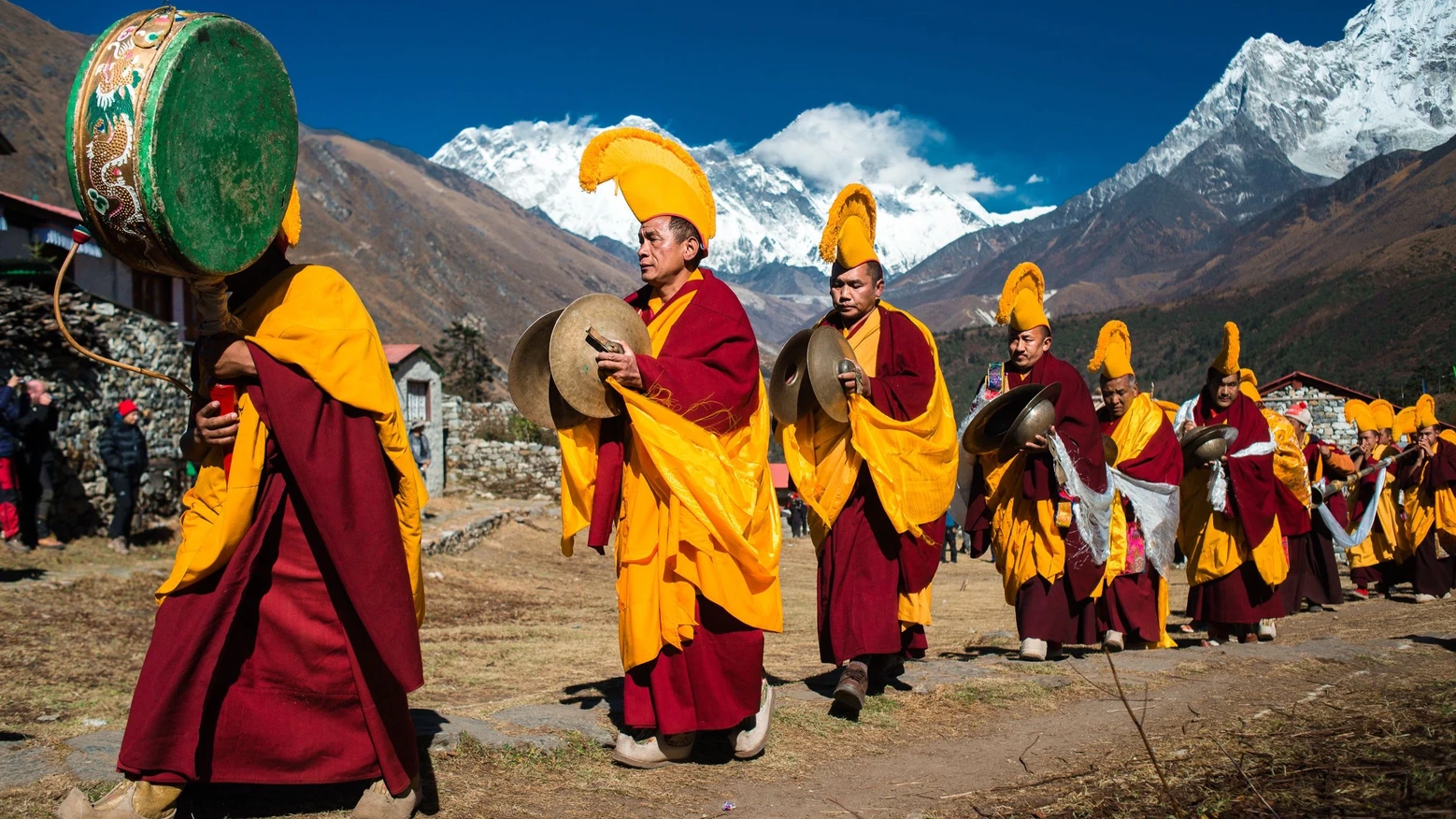Tibetan Yogis constitute a unique group of profound practitioners within the Vajrayana school of Mahayana Buddhism.
It is believed that they possess the ability to execute miracles, perform magic, and even achieve levitation. The veracity of these claims prompts the question: how can such extraordinary phenomena be possible?
This article aims to shed light on the identity of Tibetan yogis and their specific practices. By delving further, you will gain insight into Tibet, Vajrayana Buddhism, mysticism, and the remarkable individuals dedicated to these profound disciplines. So, continue reading to expand your knowledge on this fascinating subject.
Where is Tibet located?
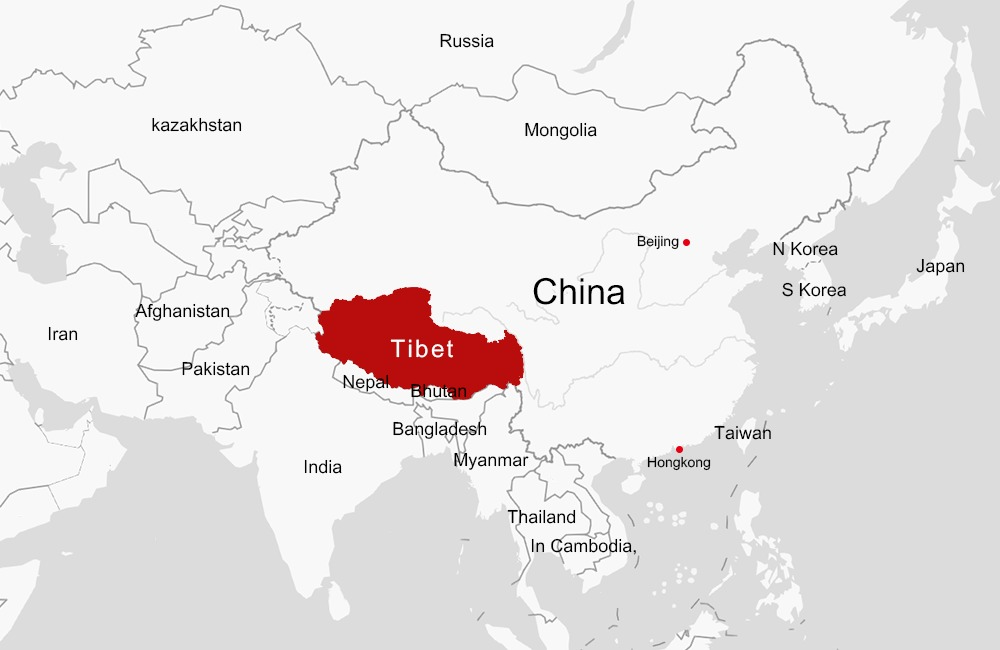
Tibet, situated on the elevated Plateau of Tibet, is surrounded by vast mountain ranges. This plateau serves as the primary origin of major rivers in East, Southeast, and South Asia, making it a vital source of water for the region. Throughout its history, Tibet has existed as an independent nation alongside China, witnessing shifts in political power among various empires and kingdoms. In 1913, the 13th Dalai Lama reaffirmed Tibet’s independence through a proclamation, leading to the preservation of its distinct national symbols, such as the flag, currency, stamps, passports, and army.
Prior to 1949, Tibet stood as an autonomous Buddhist nation nestled in the Himalayas, with minimal interaction with the outside world. It thrived as a repository of the profound Mahayana and Vajrayana teachings of Buddhism. Religion served as a unifying factor among Tibetans, who also shared a common language, literature, art, and a unique worldview shaped by their high-altitude existence and harmonious coexistence with the challenging environment. Tibet became a reservoir of rich cultural heritage nurtured in the face of adversity.
What is Vajrayana Buddhism?
Vajrayana, also known as Tantrayana, is a branch of the Mahayana school of Buddhism, drawing from the foundation of Theravada and general Mahayana practices. Often referred to as Tantric Buddhism, Vajrayana traces its origins to India, specifically within the context of Shaivism, a Hindu faith centered around the worship of Shiva, regarded as the first yogi.
The emergence of Tantric Buddhism in India occurred around the same period as Hindu Tantra, approximately in the 6th century, and thrived until the 11th century. In Tibet, the first Buddhist teachers arrived in the 8th century, primarily tantric masters from northern India. Vajrayana is widely practiced in Tibet and is also followed by the Japanese Shingon tradition.
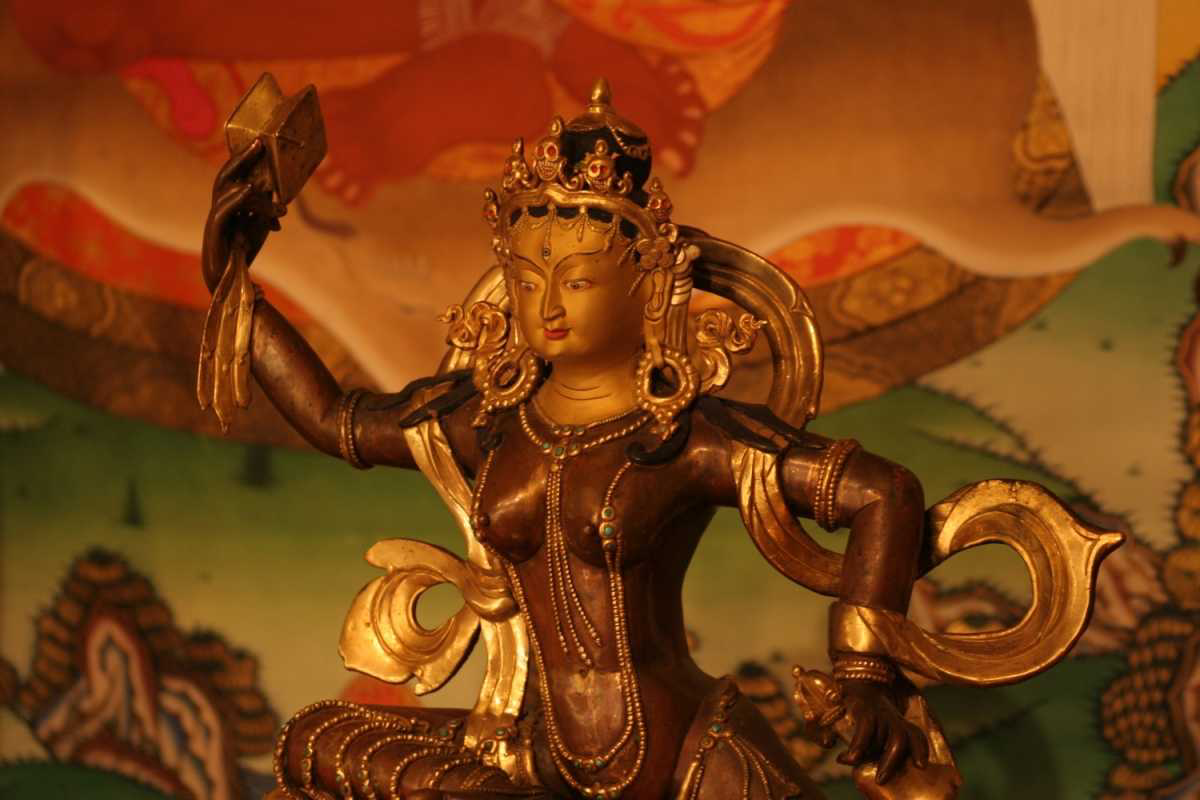
One of the distinctive features of Vajrayana is the use of visualization techniques.
Practitioners visualize themselves as deities and envision their surroundings as the mandala or environment of the deity. Through this imaginative process, Vajrayana practitioners transform their ordinary self-image into that of a fully enlightened being. The aim is to cultivate the noble qualities of the Buddhas within their own mindstreams and eventually recognize the empty nature of all phenomena.
Vajrayana encompasses techniques for transforming death, the intermediate state, and rebirth into the body and mind of a Buddha. Additionally, it incorporates special meditative techniques to develop calm abiding (samatha) and to manifest and realize the extremely subtle mind that leads to the understanding of emptiness.The ultimate goal in Vajrayana, as in all forms of Buddhism, is the attainment of complete enlightenment, a state of profound peace where all obstacles obscuring the mind have been eliminated and all qualities such as wisdom, compassion, and skillful means have been fully developed. However, reaching this ultimate goal requires active engagement rather than passive waiting.
The Vajrayana path is often considered the “fast” way to Enlightenment, where one can potentially achieve enlightenment within a single lifetime through the guidance of a qualified master and diligent practice.
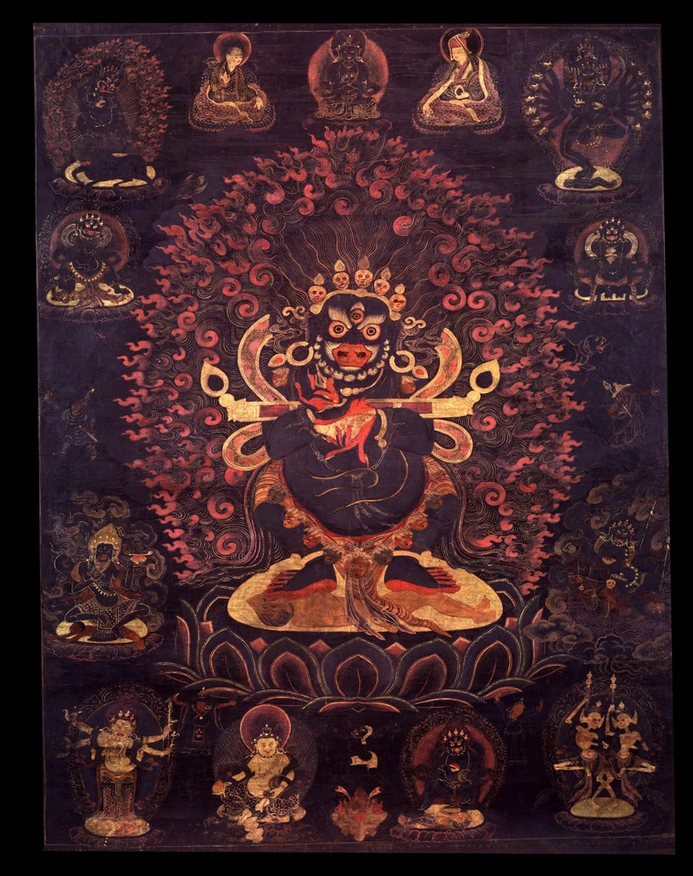
Symbolism plays a significant role in Vajrayana, given its emphasis on transformation through visualization. However, the deities depicted in its symbolism are not to be worshiped as external spirits but rather represent the inner nature of the yogi. Referred to as Deity yoga, Vajrayana Buddhism offers a path to enlightenment through the identification with Tantric deities. Under the guidance of a guru, practitioners utilize rituals, meditation, visualization through mandalas, and other practices to realize themselves as deities and manifest enlightenment. At this advanced level, dualities dissolve, and the yogi discovers the unity underlying what appears to be opposing principles.
Who are the Tibetan Yogis?
They are known as the Ngakpas and Naljorpas of Tibet. Most of the Tibetan Yogis are followers of the Secret Vehicle of Tibetan Buddhism – Vajrayana Buddhism. In the realm of Tibetan Buddhism, you can find Buddhist Yogis in all the major schools, namely Nyingma, Sakya, Kagyu, Gelug, as well as the pre-Buddhist school – Bon.
སྔགས་མ་
“Ngakma” is a phonetic rendering of the Tibetan word “sngags ma,” which translates to “yogini” or “mantrin.” This term can encompass various meanings, including non-celibate Buddhist clergy, female practitioners of Vajrayana who hold vows, highly realized female yoginis, and ritual specialists. While some may perceive them solely as ritual specialists or magicians, it is important to recognize that historically they also held roles as philosophers, contemplatives, religious leaders, doctors, and more. One notable example is Togden Sakya Sri, a Dzogchen teacher.
རྣལ་འབྱོར་མ་
“Naljorma” is a phonetic rendering of the Tibetan word: rnal byor ma, “yogini” རྣལ་འབྱོར་མ་ This term can encompass various meanings. It can refer to females who engage in internal yoga practices and meditation. Additionally, it can be used to describe highly accomplished female meditators. Furthermore, it can denote highly accomplished female practitioners associated with Vajrayogini, known as Dorje Phagmo.
Unlike celibate practitioners, Buddhist yogis of Tibetan Buddhism do not renounce the material world. They embrace a different path, one that allows them to remain engaged with the worldly aspects of life such as marriege. The most recognizable aspect of the Ngakpa tradition is their red and white shawls, distinct from the maroon shawls worn by monastic practitioners.
Similar to Tibetan Buddhist monastics, Ngakpas commit to lifelong vows and undergo Tantric ordination. They represent a lineage of Buddhist clergy rooted in Buddhist Tantra and the teachings and lifestyle of the great perfection, known as “Dzogchen.”
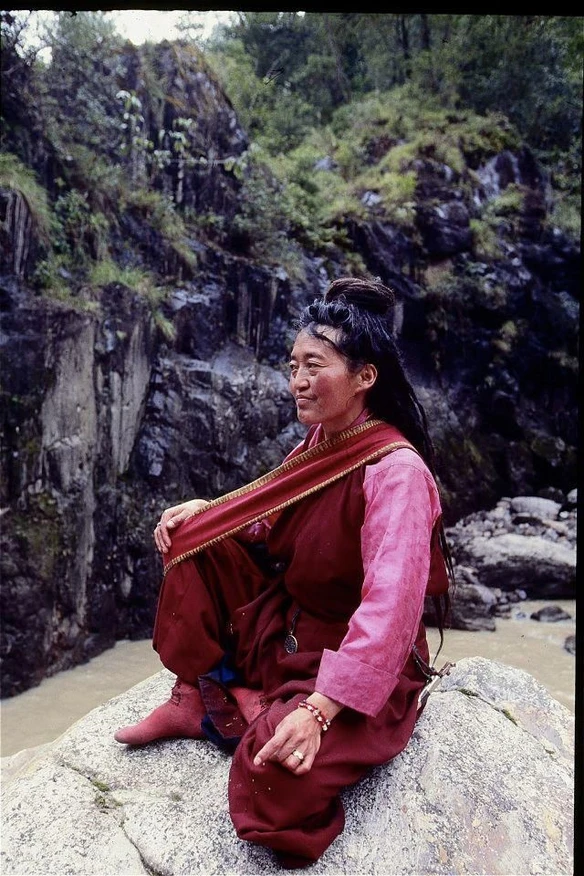
Dzogchen encompasses the teachings of the great perfection, often referred to as “philosophical Buddhism.” It serves as Buddhism’s most cherished path to awakening intrinsic wisdom. Additionally, the Ngakpas practice Chod, a contemplative method for compassionate transformation.
Among the prominent figures of Tibetan Buddhism, there exist numerous yogis who have attained fame and respect. For instance, the founder of Tibetan Medicine, Yutok Yonten Gampo, was a ngakpa. Likewise, Longchenpa, one of the greatest Dzogchen masters of all time, and Jigme Lingpa, an influential teacher from the 18th century, were also ngakpas.
How does one become a Tibetan Yogi?

Becoming a Tibetan Yogi involves a detailed and extensive process. In Vajrayana Buddhism, the role of the teacher, or guru, is of utmost importance. In this tradition, the guru directly imparts the teachings, guides the practitioner, and facilitates the recognition of one’s primordial natural state. It is crucial to have an experienced teacher in order to embark on the path of Vajrayana. Attempting to undertake this journey without proper guidance is strongly discouraged.
To practice Tibetan yoga, it is considered essential to receive a tantric initiation or empowerment from a qualified tantric master, also known as a Vajracarya.
Secrecy plays a significant role in the practices of Tibetan Yogis. It is a long-standing tradition that the knowledge of tantric symbols and practices is strictly reserved for the initiated and is not to be disclosed to the uninitiated. This emphasis on secrecy is intended to prevent misunderstanding and dismissal by those who have not received the necessary initiation and training.
Milarepa – one of Tibet’s most famous yogis

Milarepa, often revered as one of the most influential figures in Tibetan Buddhism, was a renowned Tibetan yogi and poet. He lived during the 11th century and is widely regarded as one of the greatest masters of the Kagyu lineage. Milarepa’s life story is one of immense transformation and spiritual realization, making him an embodiment of the power of spiritual practice and the potential for redemption.
Born into a wealthy family, Milarepa’s early life was marked by tragedy and darkness. Following the death of his father, his inheritance was unjustly seized by his relatives, leading Milarepa to seek revenge. Fueled by anger and despair, he turned to black magic, causing harm to others. However, he soon realized the futility and negative consequences of his actions, prompting him to seek a path of spiritual liberation.
Under the guidance of his teacher, Marpa the Translator, Milarepa devoted himself wholeheartedly to rigorous meditation and ascetic practices. He endured intense hardships, including years of solitary retreat in harsh mountain caves. Through unwavering determination and profound devotion, Milarepa underwent a profound inner transformation. He attained great spiritual realization, becoming a fully enlightened master and a poet of exceptional depth and insight.
Milarepa’s teachings emphasize the importance of inner cultivation, the impermanence of worldly attachments, and the inherent potential for enlightenment within all beings. His songs and poems, filled with poignant and heartfelt expressions, continue to inspire and guide practitioners on the path of liberation. Milarepa’s life serves as a powerful testament to the transformative power of spiritual practice and the boundless potential for spiritual awakening.
Can Tibetan Yogis levitate?
Levitation is often associated with legends and myths surrounding yogis and spiritual practitioners in various traditions, including Tibetan Yogis.
In the case of Tibetan Yogis, there have been anecdotal accounts and stories suggesting levitation as a manifestation of their advanced spiritual abilities. These accounts describe instances where certain practitioners were said to have exhibited the ability to hover or float above the ground.
In Tibetan Buddhism extraordinary abilities or siddhis are often regarded as byproducts of advanced stages of meditation and spiritual realization. These abilities, including levitation, are not typically the primary focus of practice or considered the ultimate goal of the spiritual path.
The emphasis in Tibetan Buddhism, as well as other Buddhist traditions, is on the development of wisdom, compassion, and the alleviation of suffering. The path to spiritual awakening centers around ethical conduct, meditation, and the cultivation of insight.
Spiritual traditions often employ symbolism and metaphorical language to convey deeper truths and experiences. Levitation may be interpreted metaphorically as a representation of the practitioner’s ability to transcend mundane concerns and limitations, and to experience a state of elevated consciousness or spiritual freedom.
A few names of great Maha Siddhas in Tibet:
Marpa Lotsawa → learn more here
Dromtön → learn more here
Dampa Sangye → learn more here
Yeshi Tsogyal → learn more here
Machik Lapdron → learn more here
Je Tsongkhapa → learn more here
Je Sakya Pandita → learn more here
Je Jigme Lingpa → learn more here
Je Longchenpa → learn more here
- Follow us on Instagram, and Facebook.
- Subscribe to our YouTube channel.
- Looking for more great content? Dig into our blog.
- Email us at hi@meditationmarathon.me

